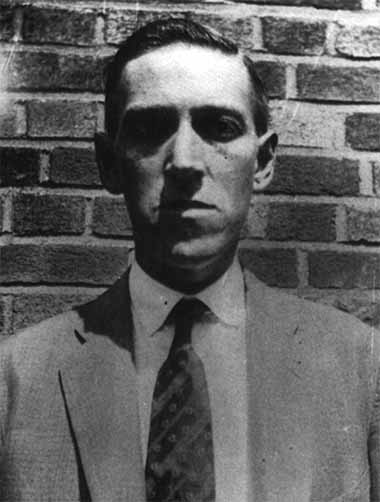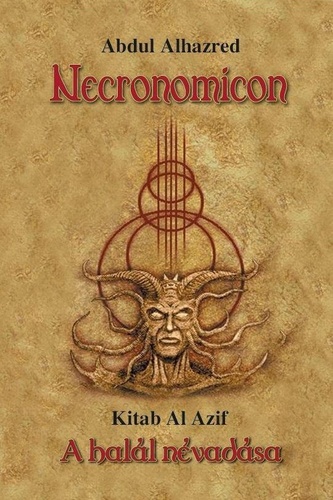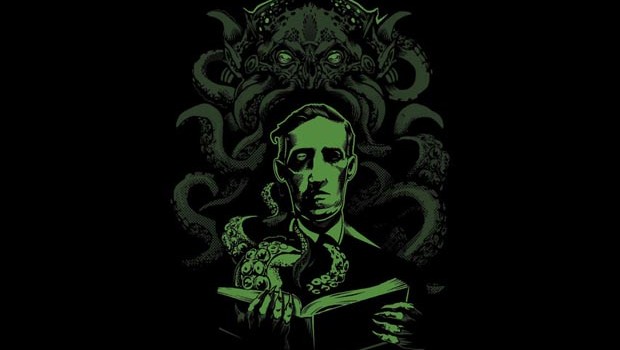Is The Mad Arab Abdul Alhazred The Real Author of the Necronomicon ?
Possibly Hidden In A Vatican City Crypt
History of the Necronomicon
The Necronomicon Book of the Dead is an occult work dating back to the beginning of the Middle Ages and its content of several hundred pages detail the origin of powerful demons, the Great Old Ones, and contains several magic rituals to conjure them through a portal overlooking Earth.

Howard Phillips Lovecraft, a famous horror and fantasy stories author of the twentieth century, mentions in his tales an old book, the grimoire of the Necronomicon, and argues that it was written around 730 in Syria, specifically in the city of Damascus, by a crazy Muslim named Abdul Alhazred.

The mad arab Abdul Alhazred, a fictional character?
In his short stories about the Great Old Ones and Cthulhu, Lovecraft tells how Abdul Alhazred would find inspiration to write the real Necronomicon original book during his trips in the desert regions of Mesopotamia and Egypt. In the midst of sandstorms, desert gods would have revealed to Alhazred an abandoned city where he would have read episodes relating the secret existence of the Great Old Ones. Back from his journey, Abdul Alhazred would have begun composing the texts which would later form the grimoire of the Necronomicon and published them in an Arabian chronicle entitled Kitab al'Azif, which would be translated as The Howlings of the Desert Demons. Lovecraft reports that Alhazred would've later become insane before dying swallowed by a mysterious creature in 738.
During his lifetime, Lovecraft himself would have had access to a Greek version of the original Necronomicon book which would've inspired him while writing his famous short stories published in pulp magazines of the time such as Weird Tales. Some, however, believe that the Necronomicon is a work of fiction straight out of the imagination of Lovecraft and that the mad arab Abdul Alhazred is an imaginary character, an illusory identity taken by H. P. Lovecraft in search of enlightenment.
What is in the Necronomicon ?
Lovecraft refers to the grimoire of the Necronomicon in several stories revolving around the mythology of the Great Old Ones and Cthulhu. These terrible winged demons of extraterrestrial origins would have populated Earth a long time ago and their powers would be immeasurable. Cthulhu, a supernatural malevolent entity, would hibernate under the rubble of a citadel it once created but which was destroyed by earthquakes.
Among other things, the grimoire of the Necronomicon would contain rituals and incantations to conjure these vile limbs of the devil. H. P. Lovecraft warns, however, that anyone succeeding in conjuring these immortal and uncontrollable entities could be responsible for the destruction of our planet. The book would be completed with various descriptions of ancient cults and practices related to the Great Old Ones as well as many notes describing their lives.
Where is the Necronomicon?
Nowadays, there are several fake replicas of the original Necronomicon all mostly written by Lovecraft's fanatics and available in bookstores or on the web. A version in particular would be extremely dangerous and subdivided into a couple of volumes so that readers keep their sanity. The real Necronomicon, the original which would have inspired H. P. Lovecraft while writing his stories, remains impossible to find.
Rumors says that rare copies can be found in London, at the British Museum, or in France at the BnF (National Library). But according to reliable sources, Abdul Alhazred's real Necronomicon would be kept inside a secret vault in a Vatican crypt.
Lovecraft's inspiration

Whether or not the grimoire of the Necronomicon actually exists and is preserved at the Vatican City, it is certain that Lovecraft had to draw his inspiration somewhere. During his lifetime, he maintained that demons manifested themselves to him while sleeping and he also boasted, in a very contradictory way, being the author of the Necronomicon. Lovecraft's inspiration would mostly come from very ancient grimoires such as Picatrix and Solomon's Key. His grandfather had a very large library and it seems that his father was a freemason engaging in Egyptian magic rituals whose writings could have influenced him.









































































































































































































































































































































